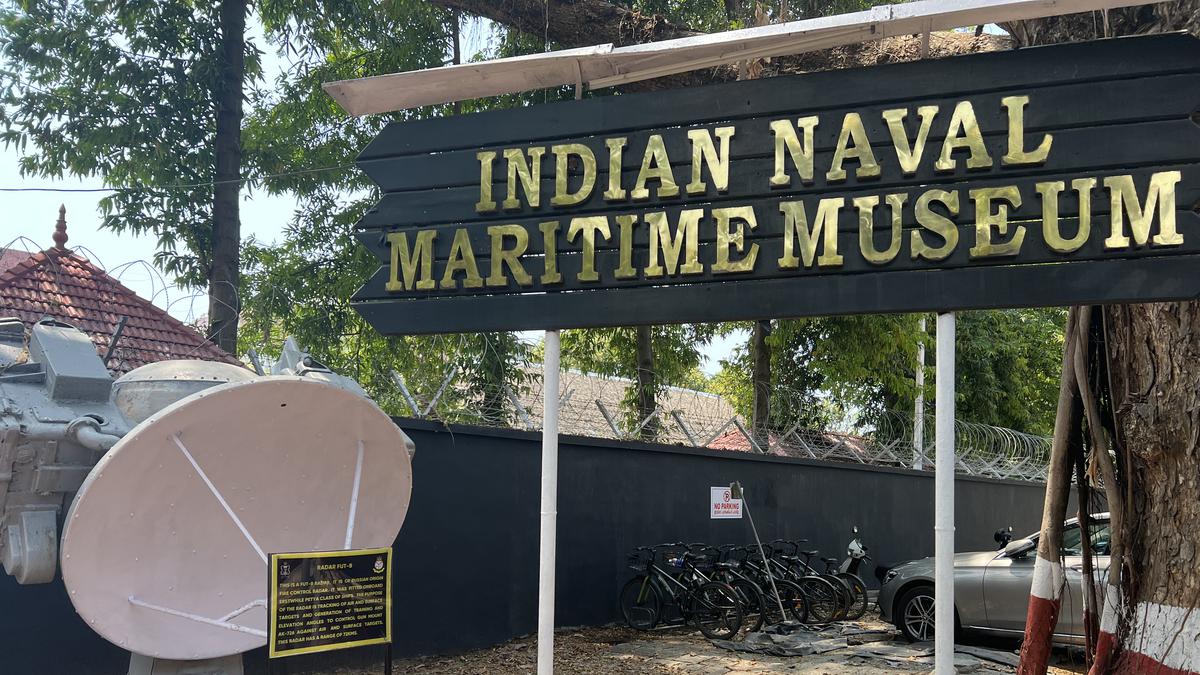
Know your Navy at the Indian Naval Maritime Museum in Kochi
The Hindu
An open-air pavilion showcasing the Indian Navy’s history is the latest addition to the Maritime museum in Fort Kochi
“Sam no Varunah” (Be auspicious unto us Oh Varuna). This is the motto of the Indian Navy. It replaced the colonial era “Heaven’s Light Our Guide”. But whose idea was this new motto? What role did the Indian Navy play in the 1971 war? Where are the Navy personnel trained?
Answers to these questions and more can be found at the Indian Naval Maritime Museum in Fort Kochi. Founded in 2001 by Rear Admiral Kripal Singh, the museum is housed in two quaint pillbox-styled bunkers made by the British in 1938.
“They preempted a strike in the impending WWII and constructed these bunkers,” says Gerard G Joseph, senior curator of the museum.
The museum, which is part of INS Dronacharya (India’s only gunnery school), was expanded to incorporate a new open-air pavilion that showcases the Indian Navy’s history. Called Blue Waters Ahoy, the wing is a charming walk through a well-narrated history, with rare photographs and chronological display.
The first bunker highlights the maritime history of Kerala, starting with the fierce naval battles between the four generations of Kunjali Marakkars (admirals of the Calicut Zamorin’s fleet) and the Portuguese over eight decades. “It prevented the Portuguese from making Kerala their base, says Gerard. Paintings and frescoes take one through seminal events such as the formation of the Indian Navy, how C. Rajagopalachari (the last Governor-General of India) selected the new motto from the Upanishads, the change of the symbol to the Asokan lion motif and more.
In the second bunker are displayed the various uniforms of the Indian Navy, the epaulettes and the ranks, rifles from World War II and personal memorabilia of valiant officers such as the peak cap, ceremonial sword and 9mm pistol of Admiral O.S. Dawson, India’s 11th Naval Chief and the sword, medals and .38 revolver of Vice-Admiral E.C. Kuruvila, the fleet commander of the Western Command during the 1971 war. A scaled model of a dhow used by the Maratha Navy is yet another attraction.
The video room screens the 1971 war in which the Karachi port was destroyed and it celebrates, on screen, the biggest naval training academy at Ezhimala. The lawns have scaled models of the INS Delhi, INS Godavri, and INS Talwar, a vintage model of the Bofors gun, AK-230 (Soviet fully automatic naval twin 30 mm gun), the Sea King Helicopter, a Diving Bell, an anchor and more.













